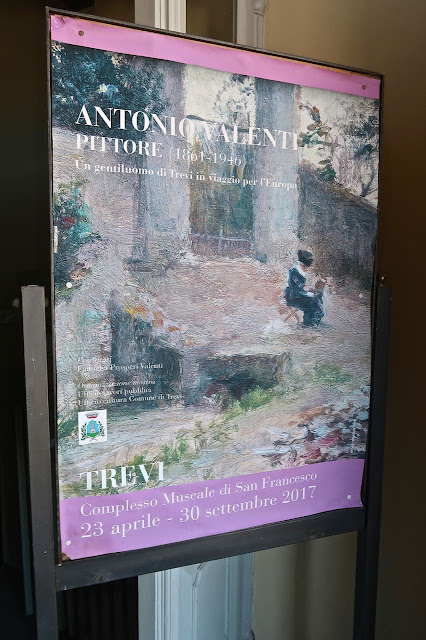Surrounded by olive trees, the historic centre of Trevi unwinds around the steep conical hill of Monte Serano, which dominates the plain of Spoleto. One of the the 'Most Beautiful Villages of Italy' — "I Borghi più Belli d’Italia" — this small medieval town is famous throughout Italy for its ancient olive oil tradition, produced in the Trevi hillsides for over 2,000 years. Old stone houses still dot the hillside dating back to the 16th century, where olive growers used to stay during the harvest. Production techniques are still not much different from those used by the Etruscans at that time. Olives are hand picked in the field and carried the same day over rough terrain to the mill, where they are crushed by two great granite stones and made into a paste, pressed, and after a few months of mellowing, the oil is subsequently stored. Olive oil, the reigning product of Trevi, is also the focus of The Museo della Civiltà dell’Ulivo, which opened in 1997 on the ground floor of the former St. Francesco monastery, annexed to the church of St. Francesco, which dates from the 14th century. The church and the Art Gallery, along with the Museum and the Archaeological Collection form the art collection of St Francis, is the first public museum in Italy and Europe dedicated to olive oil and the olive tree. It's been often quipped that "trying to snap a picture of Trevi without an olive tree getting in the way is much like trying to photograph an elephant without the trunk getting in the way."
The beautiful historic centre of Trevi with a network of narrow streets and lovely architecture
The ancient Convento di San Bartolomeo with 15th century fresco
Beautifully preserved, Roman and Medieval architecture abound in every corner of Trevi
Palazzo della Prepositura Valenti built in 1650 and now a hotel and elegant restaurant
on Piazza della Rocca
Cobblestone pathway to a provate residence with ancient campanile
Chiesa di Sant'Emiliano was built over the Roman Temple of Diana
A beautiful private Palazzo with sunny terrace garden and elegant wooden entry
Flowers were in bloom throughout the historic centre
Museo della Civiltà dell’Ulivo and Raccolta d'Arte di S. Francesco, located in the former convent of San Francesco, built in the 13th century, and the only museum dedicated to the olive in Europe
Roman terracotta olive oil urns
Scale model showing the the extent of olive groves in Roman Trebia
The Church of St. Francesco, which dates from the 14th century, is attached to the Museum
14th century frescoes
Special Antonio Valenti exhibition in the museum
Of particular interest were the small sketches and watercolours Valenti made in his 2"x3" notebook
Small but potent drawings
A lovely small charcoal drawing
View from Trevi just outside the Museum, with groves on olive trees
Old wooden door protected the entrance to a noble Palazzo
Archway of the old 14th century Medieval house
14th century intact Medieval House overhanging the lane below
Ancient stone and brick cobble streets of Trevi
Ancient wooden door in the Jewish quarter of Trevi
17th century Borghetto Del Mostaccio, just one of a handful of small charming hotels in Trevi
Each home has its own mailbox with key — some snazzier than others
Palazzo Valenti was the Palace of the Counts Valenti di Riosecco,
and the most beautiful Renaissance palace in Trevi
Inset into the enormous arched portal are carvings of the noble Valenti family
Ristorante Maggiolini on Via San Francesco, is adjacent to the Palazzo Valenti
The brick arched interior of Maggiolini
The menu with traditional Umbrian dishes using local Trevi produce
A delicious bottle of 2016 Verdicchio dei Castelli di Jesi from Le Marche
An elegant, soft, fresh and fruity wine with aromas of melon, citrus and grapefruit
Bruschetta con Pesto di Sedano: Bruschetta with Celery Pesto
Strapazzata al Tartufo: Scrambled Eggs with Truffle
Risotto ai Gamberi di Fiume: Risotto with River Prawns
Spaghetoni alla Carbonara di Pesce con Tonno e Gamberi
Macchiato con latte caldo








































No comments:
Post a Comment